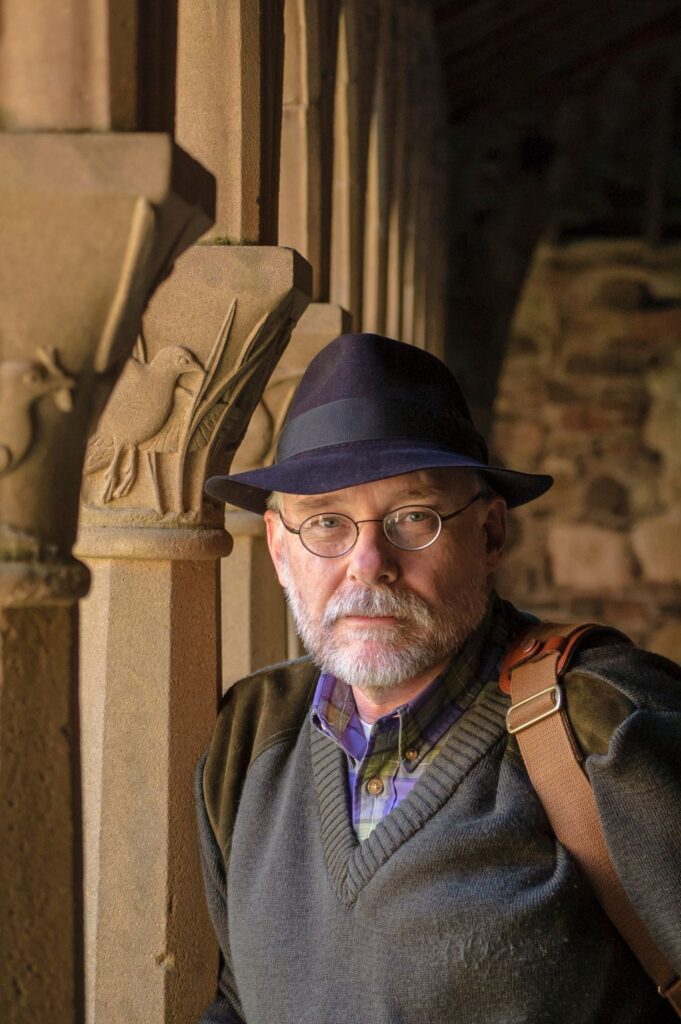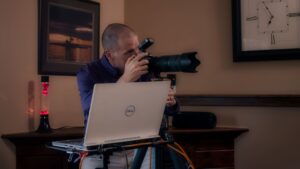
Give up the ego that you know what you’re doing, and let reality speak. Let reality guide you.
Jim Richardson
You can also listen to this episode with Jim on iTunes, Pocket Casts, Spotify, Castbox, and Google Podcasts
Grow your passion in our online community and interact with the host, Perrin, gain access to monthly photo contests, discover daily inspiration, and much more!
Interested in contributing? Visit our Supporter page to find out more.

Jim Richardson is one of those rare photographers whose work not only captures your eye but grips your heart and mind as well. With over 35 years at National Geographic, Jim has built a career filled with stunning photos and deep, thoughtful storytelling. From the quiet corners of small-town Kansas to the windswept highlands of Scotland, his imagination and skills have brought us closer to the beauty, resilience, and challenges of our world.
What really sets Jim apart is his gift for creating stories that spark curiosity and understanding. His photographs transport you into moments and places that feel both personal and universal. And it’s not just about the beauty. Jim’s passion for the environment has led him to document critical issues like diminishing freshwater supplies, the impact of agriculture on sustainability, and the growing problem of light pollution. He doesn’t shy away from the tough stuff—instead, he dives in with a genuine drive to educate and inspire change.
Through it all, Jim has embraced the evolution of photography. He cut his teeth shooting on Tri-X film but has seamlessly transitioned to digital, proving it’s not the tool but the vision behind it that matters. His dedication to storytelling makes him a constant learner and teacher, which shines brightly in this episode.
Here’s just a taste of what you’ll get from our conversation with Jim:
- He reflects on the incredible evolution of photography, from old-school film days to the feats of modern-day technology.
- He shares why environmental storytelling matters to him and how tackling heavy topics like water sustainability can make a real difference.
- If you’re an aspiring photographer, you’ll love Jim’s advice on finding your voice and navigating today’s world where opportunities are boundless but creative purpose is key.
Get ready to be inspired as Jim takes us into his world and shares the lessons he’s learned after decades behind the camera. Whether you’re a photography buff, a nature lover, or someone finding their creative spirit, there’s something here for you. Enjoy the episode!

Q: Has National Geographic always been on your radar? How did your passion for photography start?
Jim: Yes, National Geographic was always on my radar, even when I was growing up on a farm in Kansas. We had copies at my one-room school along with an Encyclopedia Britannica. What I knew of the world beyond came from those two sources unless it was on the evening news. My passion for photography started as a hobby when I was a kid. My dad was an amateur photographer and picked up cameras at pawn shops while hauling eggs to Texas. That’s where my first cameras came from, and it got me going. Later, in college, I worked for the student newspaper, which really set me on the path.

Q: Why did you choose environmental issues as your focus for National Geographic?
Jim: They were stories that needed to be told. Topics like the Colorado River, the Ogallala Aquifer, and water sustainability are critical issues. Some of these, like the Ogallala Aquifer, weren’t stories anyone else wanted to take on, but they’re important. These stories allow you to bring up issues and become part of the conversation about how we use or abuse our resources. While a single picture might not change someone’s behavior, it can contribute to a larger dialogue and make a difference over time.

Q: What advice would you give to aspiring photographers who want to pursue documentary photography or work with publications like National Geographic?
Jim: You have to look around and ask, ‘Where are the eyeballs?’ The point of a picture is for it to be seen. Today, it’s not the same as when National Geographic had millions of subscribers. There are still people telling important stories and reaching the right audiences, but the mechanisms have changed. I wouldn’t advise someone to start their career with the sole goal of being a National Geographic photographer because that role doesn’t exist in the same way anymore. Instead, focus on where people are looking and find ways to tell meaningful stories in those spaces.

Key Links and Mentions From the Episode
People Mentioned
- Rich Clarkson – A mentor to Jim during his early career at the Topeka Capital-Journal, where he worked alongside future National Geographic legends like Sarah Leen and Chris Johns.
- Sarah Leen – Former Director of Photography at National Geographic, who was part of the talented group of young photographers mentored by Rich Clarkson.
- Chris Johns – Former Editor-in-Chief of National Geographic, another peer of Jim’s during his formative years in Topeka.
- Dennis Dimick – Longtime National Geographic editor who collaborated with Jim on impactful environmental stories, including those on sustainable agriculture and water conservation.
- Babak Tafreshi – A dark sky photographer whose work has significantly advanced awareness of light pollution and dark sky preservation, building on the foundation of Jim’s earlier work.
Tools & Gear
- Tri-X Film – The black-and-white film Jim used during his early days, which shaped his documentary style.
- Kodachrome Film – A staple of Jim’s National Geographic assignments, known for its rich colors and archival quality.
- Nikon D3 – A game-changing digital camera that allowed Jim to capture stunning Milky Way images, advancing his work on light pollution.
- iPhone – A tool Jim now uses for workshops and personal projects, showcasing how technology has democratized photography.
Projects & Opportunities
- Cuba, Kansas Documentary Series – A decades-long black-and-white project capturing life in a small rural town, emphasizing universal human experiences.
- Light Pollution Story for National Geographic – A groundbreaking feature that highlighted the loss of the night sky and inspired the growth of dark sky preserves worldwide.
- Environmental Stories for National Geographic – Including coverage of the Ogallala Aquifer, Colorado River, and sustainable agriculture, addressing critical global issues.
- Scotland Photography Series – A 25-year exploration of Scotland’s landscapes, culture, and heritage, including iconic images like the moonlit Eilean Donan Castle.
Places and Locations
Cuba, Kansas – The small town where Jim honed his storytelling skills through decades of documentary photography.
- Topeka, Kansas – Where Jim’s career began at the Topeka Capital-Journal under the mentorship of Rich Clarkson.
- Scotland – A recurring subject in Jim’s work, where he has captured the country’s rich history and dramatic landscapes.
- Antarctica – One of the many remote locations Jim visited through National Geographic Expeditions.
Key Themes Discussed
- The Evolution of Photography – From Tri-X film to iPhones, Jim reflects on how technology has transformed the craft while maintaining its core purpose: storytelling.
- Environmental Storytelling – Jim’s dedication to documenting critical issues like water conservation, light pollution, and sustainable agriculture.
- The Power of Community – Lessons learned from photographing small-town life in Cuba, Kansas, and becoming part of the communities he documents.
- Adapting to Change – How Jim has embraced new tools and platforms, from digital cameras to smartphones, to continue telling meaningful stories.
- The Role of Gatekeepers – A reflection on the shift from traditional editorial oversight to today’s democratized platforms like Instagram and Substack.
- Photography as a Language – Jim’s belief in photography as a universal tool for understanding and communicating about the world.









